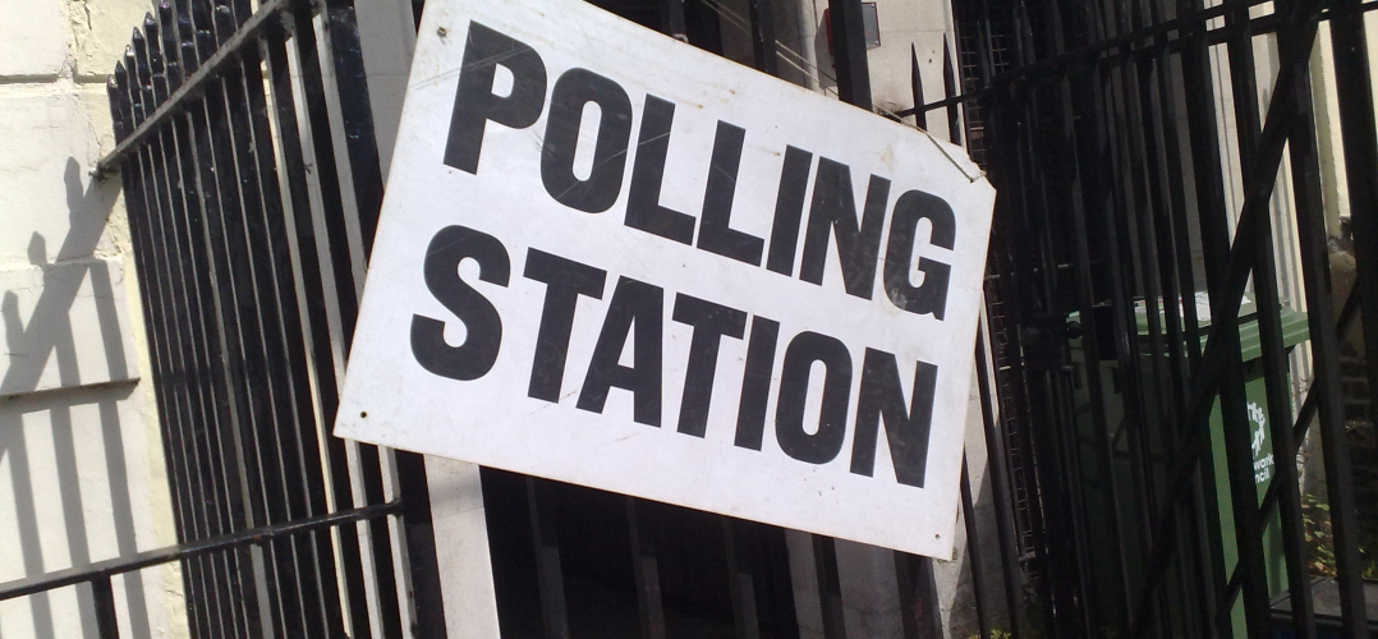100 days to go: 10 themes that may come to define the outcome of the UK General Election
by Shomik Panda on 27 Jan 2015
With 100 days to go to the most unpredictable UK General Election in a generation, Inline Policy kicks off a series of analysis pieces on the election in the run up to May 7th. We start with ten themes that we believe could help define the outcome of the election:
- National polls will lose their importance as tactical voting comes to the fore: There are approximately 150 swing seats that will hold the key to this election. For the first time sophisticated polling, delivered via Lord Ashcroft’s polls, is being conducted in these swing seats. Voters will be able to see regular polling snapshots in swing constituencies in the run up to polling day. This is likely to push voters to vote more tactically than ever before. The national polls may project slight leads for one major party over the other, but vastly divergent regional landscapes mean that national polls are going to become less useful in determining the overall outcome. Instead, the national outcome is to be projected via an increasing reliance on a set of local polls that have thus far been untested in previous elections. It therefore remains to be seen how accurate these local polls will be. If they are not as accurate as they should be, expect a vastly different result to what the pundits are predicting.
- The TV debates may not be as impactful as in 2010. The wrangling over format has led to the likelihood that the debates will not be held at all, or that we will see formats with 7 or 8 participants that will make it much harder for individuals to make a decisive breakthrough in the manner that briefly propelled Nick Clegg and the Lib Dems into the limelight in 2010. If anything, the lasting impact of the TV debates this time around may come ahead of the period before the potential debates, rather than from the debates themselves. Fringe parties, most notably the Greens, but also to a lesser extent UKIP, the SNP, Plaid Cymru and the DUP, are already benefitting from media coverage that would normally be the preserve of others. The biggest losers look like the Lib Dems, who may lose the platform with the two leading parties that they enjoyed in 2010. The Labour Party also looks suddenly exposed, with a number of newer participants potentially ready to outflank them on the left.
- The Conservatives will outspend Labour on the ground: At both a national and constituency level the Conservative Party could outspend Labour by up to 3 times, according to Douglas Alexander, the head of the Labour Party campaign strategy. This funding will undoubtedly be poured into marginal seats where the Conservatives have a hope of victory. The Labour Party has pledged to knock on the doors of 4 million people ahead of May 7th. If the Conservatives spend their war-chest wisely, however, they should be able reach many more people, and by whatever method it chooses. Importantly, if a fragile government with a small majority emerges and then soon falls after the election, the Conservatives will be the only party that will also be well placed to fight a second election in quick succession.
- The fate of a significant number of marginal seats will be decided by the fringe vote. In the 2010 general election, approximately 12% of voters did not support the three main UK parties. Latest polls put this figure closer to 25-30% after a collapse in support for the Lib Dems and the rise of UKIP and the SNP and, more recently the Greens. While the SNP will undoubtedly take a large number of seats from the Labour Party north of the border, the impact of UKIP and the Greens will not be so obviously dramatic. Between them it is unlikely that they will conjure up a double-digit haul of seats. They will, however be fielding seats right across the regions and their impact will be crucial to the fate of the leading parties in marginal constituencies. Up and down the country, expect to hear the Conservatives threaten that a vote for UKIP is tantamount to a vote for Labour; and the Labour Party to increasingly protest that a vote for the Greens will equate to a vote for the Conservatives.
- The democratic deficit is set to grow: If polls are to be believed, 2015 will see overall support for the two main parties hit new lows, but their proportion of seats in Parliament are likely to remain broadly the same. Since 1945 there has been a steady erosion of the proportion of the vote of the two main UK parties. Conservatives and Labour parties have steadily polled above 85% of the vote in every post-war election up till 1974. In recent years this has fallen to as little as 65%. This figure may well fall again in 2015 as disillusionment with the two mainstream parties looks likely to increase. Despite this, the quirks of the UK first-past-the-post system mean that the two major parties are still projected to take 85% of seats in the UK Parliament. Moreover, if history is a guide, turnout is likely to be no greater than 65% with current polls indicating that the largest party is unlikely to poll more than 35%. This means that quite probably we will see the largest party forming a government (with others or not) on the back of a mandate of less than 22.75% of the UK electorate. Expect a growing set of disenfranchised voters and disillusioned fringe parties to come together in a call for electoral reform in the next Parliament.
- Economic indicators are shifting in favour of the Conservative Party: After a flirtation with fighting the election on the UKIP territory of immigration, the Conservative Party seems to have now settled on ramming home their key message, which is that they have turned the UK economy around and that only they can be trusted with its stewardship. The Labour’s Party’s economic rebuttal is that this has not trickled down into people’s wallets and that a cost of living crisis is in full swing. The Labour message has started to show signs of unravelling in the recent weeks however as a slew of economic data has emerged showing that real wages are rising, employment is rising, and that price inflation is coming down, not least due to the dramatic fall in energy prices. Interventionist Labour policies to put caps on energy bills are suddenly looking less relevant. Labour’s commitment to running a budget surplus in the next Parliament means that outside of their cost of living crisis assertions there is arguably little that they can talk of on the economy to distinguish themselves from the Conservatives. Given that many voters still associate the Labour Party with mismanagement of the nation’s finances during their previous term in office, the Party needs to find a better message, fast.
- Success for the Labour Party may depend on how well they manage to shift the election battleground away from the economy and on to the NHS. The NHS remains the single most important issue to UK voters according to recent polls and the issue where they are most trusted by the UK electorate. The Labour strategy will be to paint the NHS as being in crisis under the coalition government and that only they can be trusted to protect it in future from creeping privatisation. . This message undoubtedly has traction with some voters. But although the public seem to agree that the NHS is in crisis, they are yet to be convinced that the Labour Party has a credible plan to address this challenge. Labour’s success in making this the defining campaign issue will ultimately depend on how well they rise to this challenge and differentiate themselves from the current government (and especially the Conservatives). With Labour looking less strong on the economy and on other key issues of voter concern, such as immigration and welfare, how well it plays the NHS card will be fundamental to whether Ed Miliband becomes Prime Minister.
- The fringe vote is beginning to fragment and this will have implications for both marginal seats and the nature of any future coalition. Not so long ago the popular protest vote generally went to the Liberal Democrats. Over the course of being in Government their popularity has faded considerably and disillusionment with the two leading UK parties has manifested itself instead within the rising popularity of UKIP in England and the SNP in Scotland. A number of factors may change this. In England, it is unclear where the protest vote will ultimately be registered. The Greens are emerging as a force for those that are disillusioned on the left and while they are some way from taking the same number of votes away from Labour as UKIP may take from the Conservatives, we may continue seeing the gap narrow. Importantly, predictions of a whole scale rout of the Lib Dems may be wide of the mark. Strong local incumbency bias in approximately 30 of their seats may mean that they may yet hold more seats than some pundits are expecting. In Scotland, the SNP may not make the clean sweep that is projected in if the Labour Party manages a resurgence under the new leadership of Jim Murphy. Each of these factors will impact upon key local marginal results and ultimately the shape of the next government.
- If there is to be coalition post May 2015, its shape will most probably be very different to the last. Current polling points to a coalition of sorts. The probability of single party majority rule is slim and current polls even point to a possibility of a three-way coalition as the two main parties may be left in a scenario where they cannot reach a majority with a preferred coalition partner. If there is to be a coalition, the Liberal Democrats and the SNP are most likely to be in the position of kingmaker, but neither possibility is likely to be palatable to the major parties. The SNP has ruled out working with the Conservatives and despite being ideologically closer to the Labour Party, their demands over devolved powers in the next Parliament (and position on Trident renewal) are likely to make them a potentially toxic coalition partner. The Liberal Democrats will most likely be a depleted force and many within the Conservative Party will not want to see them as a future coalition partner, but realistically, if the Conservatives need to make up a significant shortfall of seats, they will be forced to look toward the Lib Dems, as UKIP and the DUP (their other potential partners) are unlikely to be able to make up the numbers. Labour and the Liberal Democrats are ideologically closer as parties, but bad blood runs deep between the two parties at an activist level and this would make any coalition between the two parties less than straightforward.
- Confidence and supply rather than coalition government. Given the issues that the major parties might have in forming a workable majority, there is a strong possibility that a majority government will not be able to be formed and that a minority government will instead emerge with smaller parties providing confidence and supply, as required. After the Liberal Democrat experience of being tainted as the junior coalition party, potential junior coalition partners could be less keen to get their hands on ministerial posts and more focused on retaining their ideological purpose by providing confidence and supply from outside the constraints of government. Such an arrangement will be a more fragile form of government and may be more likely to be pursued by the Conservatives than Labour for two reasons. First, they may find it harder to find the partners to form a full blown coalition and second, they will be less worried by the prospect of having to call another election in the event that a minority government falls. After all, they are currently the only national party that has the funds to put up another strong fight election at a national level.
With 100 days to go the above themes have a long way to run. Follow our analysis as the election develops…
Topics: UK politics, Shomik Panda







Comments